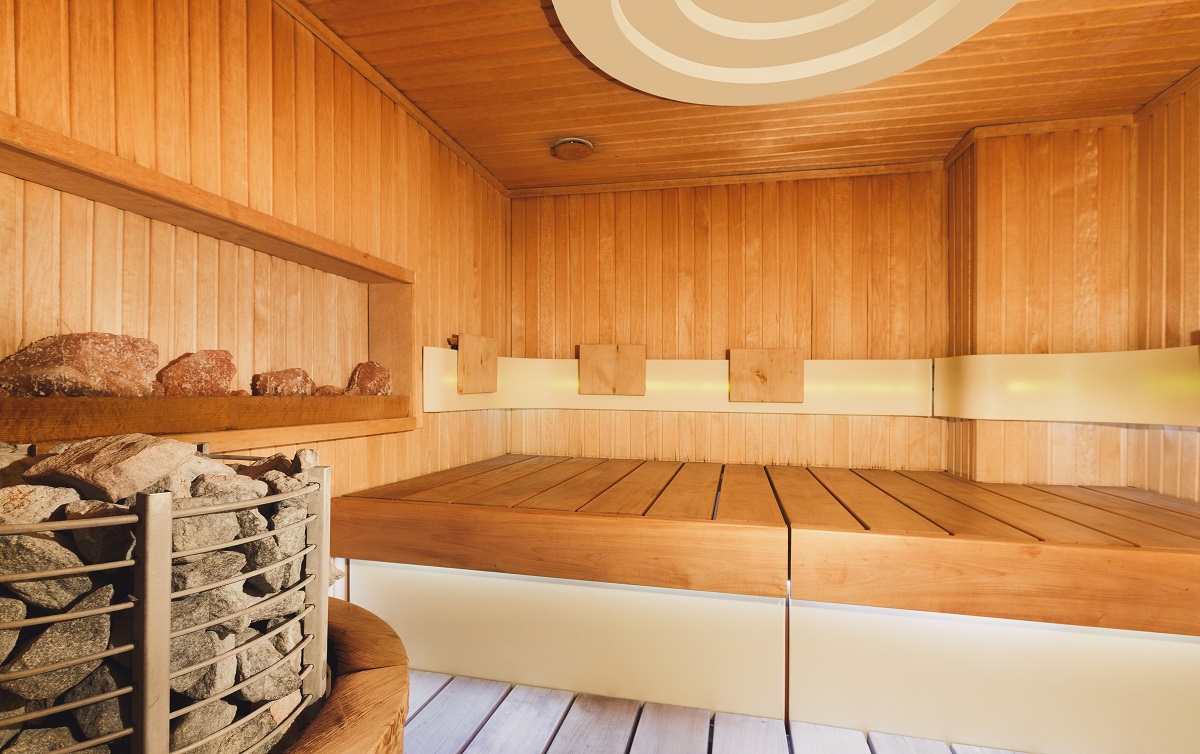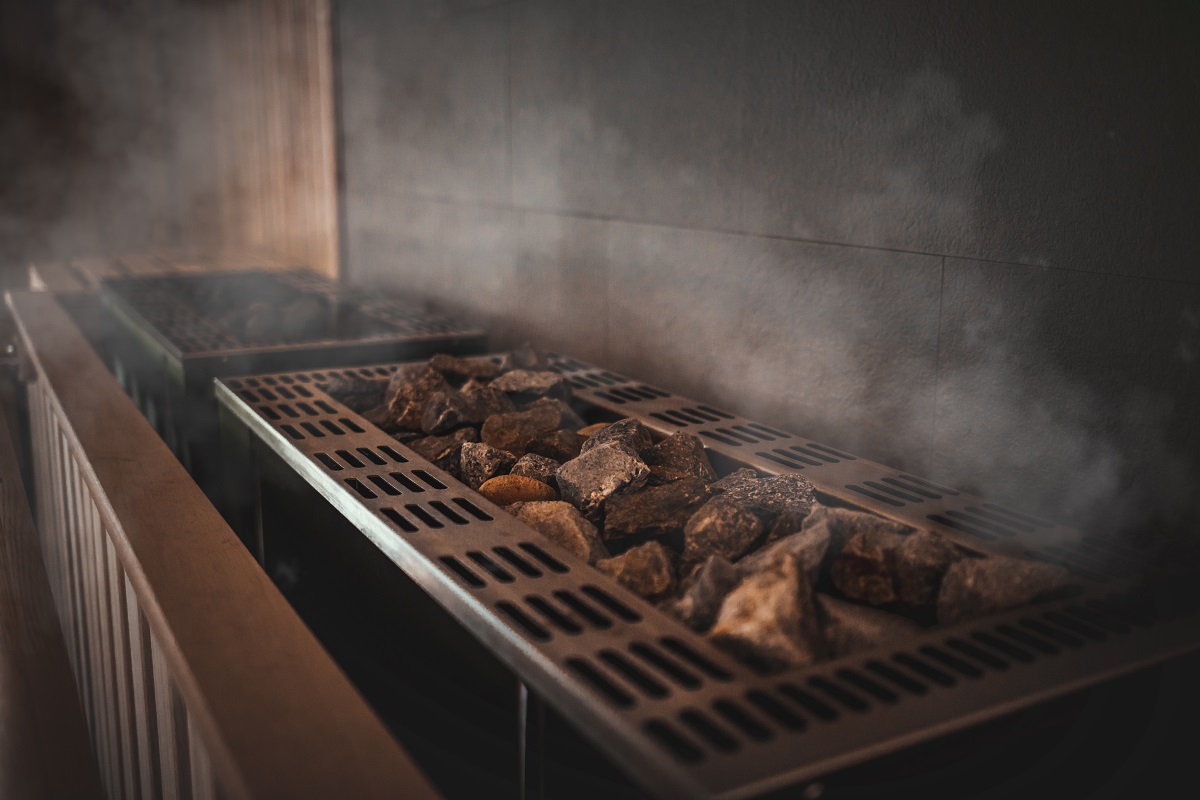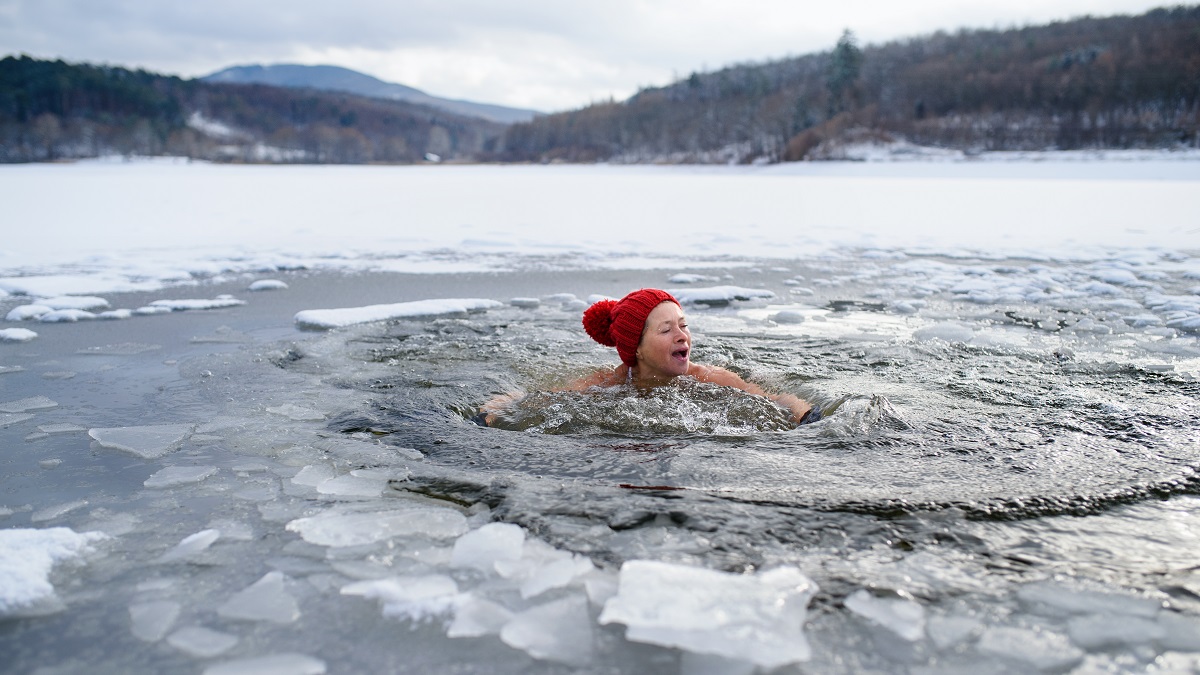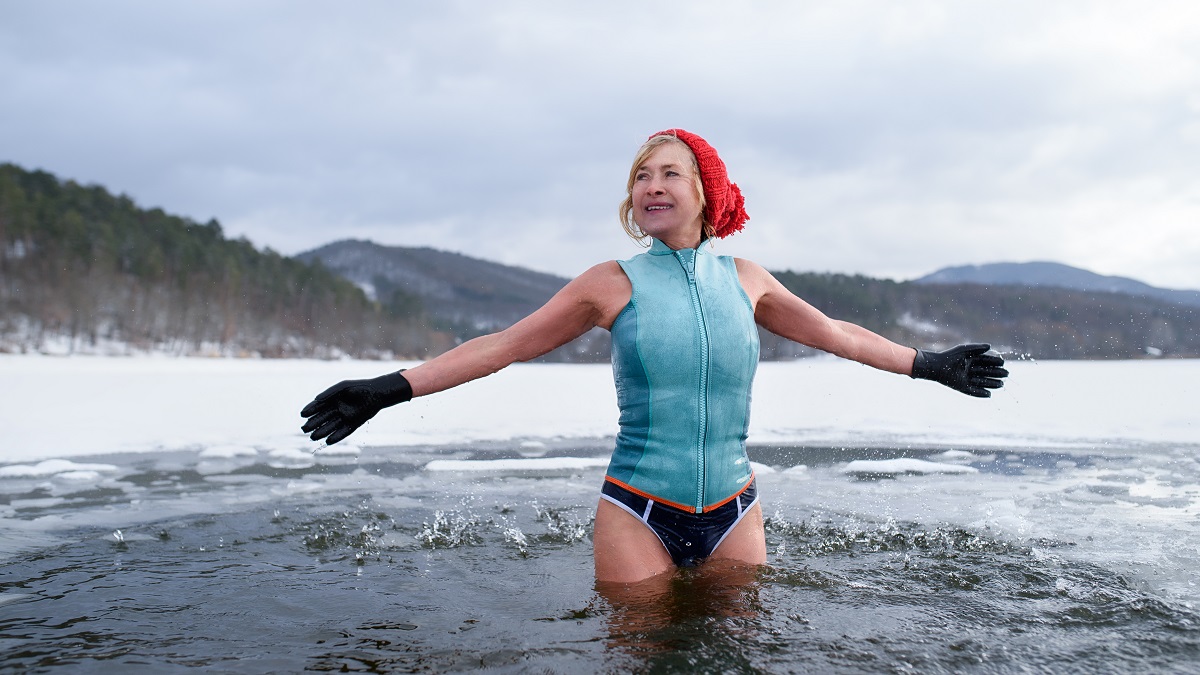I remember the first time I took the plunge. Stepping out from the sweltering heat of a sauna and immersing myself into a bone-chilling bath was, to put it mildly, electrifying. As a swimming instructor, I’ve always been accustomed to various water temperatures. But this? It was an entirely different beast. Over the months, not only has my cold tolerance soared, but I’ve also felt healthier, stronger and more invigorated after each session. Ready for the deep dive? Let’s go!
Tracing back the history of sauna

Ancient rituals and the modern world
The concept of oscillating between hot and cold extremes, be it water or air, is deeply entrenched in human history. This ritualistic practice, fascinating in its simplicity, has roots that stretch far and wide across different cultures and eras.
The romans and their love for baths
The Ancient Romans were particularly known for their elaborate bathhouses, called ‘thermae’. These were not just places for cleansing but also for socialising, exercising and yes – experiencing the rejuvenating benefits of thermal therapies. In these vast, architectural marvels, bathers would progress through a series of rooms, each varying in temperature. From the ‘caldarium’ (hot room) to the ‘frigidarium’ (cold room), they would experience a range of temperatures that not only revitalised the body but also, many believed, cleansed the soul.
Nordic traditions and the sauna culture
Fast forward several centuries to the icy lands of Scandinavia. Here, the sauna is not just a room; it’s a sacred space. The Finns, in particular, have made saunas an integral part of their culture. Traditional Finnish saunas involve heating up in a wooden room followed by a cold plunge in a nearby lake, even during winter! This stark transition, quite literally from hot to freezing, is said to fortify the body and spirit. The practice is so revered that many believe it has contributed to the renowned resilience and robust health of the Nordic people.
Modern adaptation and global recognition
Today, the idea of alternating between hot and cold has not only survived but thrived. Modern spas and wellness centres around the world offer variations of this ritual, whether it’s through steam rooms, saunas, cold plunge pools or even cryotherapy. Whether you’re in Asia, Europe or the Americas, this age-old tradition has been adapted and integrated, reflecting the universal appreciation for its undeniable health benefits.
Diving deep into the world of saunas and steam rooms
The allure of enveloping oneself in warmth, especially after a gruelling workout or during a chilly day, is undeniable. Saunas and steam rooms, while seemingly similar, offer distinct experiences. Let’s journey through their history, understand their features and uncover their myriad benefits.
The sauna: Finland’s toasty gift to the world
If we were to personify the sauna, it would be a calm, age-old Finnish sage bestowing relaxation and wellness upon its visitors. This iconic Finnish invention is more than just a heated room—it’s an experience, a ritual.
Characteristics:
- Origin: Deeply rooted in Finnish culture, saunas are a staple in many Finnish homes.
- Heat source: Predominantly, wooden stoves filled with stones are used. When water is thrown onto the heated stones, it produces steam, increasing the humidity momentarily.
- Temperature: A genuine sauna experience means embracing temperatures ranging from 70°C to a sizzling 90°C.
- Humidity: Despite the occasional burst of steam, saunas are all about dry heat, typically boasting a humidity level between 10-20%.
Benefits:
- Detoxification: Intense sweating is the sauna’s signature. This sweating process aids in flushing out toxins, giving a natural detox.
- Improved circulation: The high heat results in blood vessel dilation, encouraging improved blood flow. This not only promotes healing of minor bruises but also soothes muscular aches.
- Mental relaxation: Many regular sauna-goers also attest to the mental relaxation benefits, often emerging feeling more rested and less stressed.
The steam room: An ancient roman delight reimagined

The steam room or ‘caldarium’ as it was known in ancient Rome, is a sanctuary of moist heat. The atmosphere is thick with mist, making it a stark contrast to the dry ambiance of saunas.
Characteristics:
- Origin: Harking back to ancient Roman times, these chambers were key components of the famed Roman bathhouses.
- Heat source: Modern steam rooms utilise steam generators to pump in the dense, warm mist that defines them.
- Temperature: Generally milder than saunas, steam rooms hover around the 40-45°C mark.
- Humidity: The defining feature is its near-100% humidity, making the heat feel much more intense than in a sauna.
Benefits:
- Respiratory relief: The warm, moist air is a boon for the respiratory system. Those with conditions like asthma or bronchitis often find relief in the steamy embrace of these rooms.
- Skin hydration: Moisture-loving folks, rejoice! Steam rooms are fantastic for hydrating the skin, addressing dryness and opening up the pores for a deep cleanse.
- Joint relief: The humidity can also be beneficial for those suffering from stiff joints or arthritis, offering a soothing relief.
Making the choice
While both saunas and steam rooms provide myriad health benefits, the best choice boils down to personal preference. Are you a fan of dry heat or do you thrive in humidity? Regardless of your pick, both promise a world of relaxation and rejuvenation. So, the next time you’re faced with this toasty dilemma, remember: there’s no wrong answer—just different paths to relaxation.
Health benefits & scientific insights: Unveiling the magic of thermal therapy
The dance between the searing warmth of saunas or steam rooms and the invigorating chill of a cold bath has been enjoyed for centuries. But why exactly does this juxtaposition feel so rejuvenating? Let’s explore the science behind the sensation, diving deeper into the myriad benefits of this practice.
The transition – More than just a chill

Describing the sensation as you move from stifling heat to piercing cold can be challenging. It’s an almost electric feeling, a ‘thermal shock’, which jolts the system. Far from being merely a ‘shock’, this deliberate and rapid change in temperature offers a plethora of health benefits.
Benefits:
- Boosted immunity: The body’s response to this sudden temperature change can actually strengthen the immune system. A study from 2016 provides intriguing evidence: regular sauna-goers reported fewer instances of the common cold compared to non-sauna-goers. This is believed to be due to an increased production of white blood cells, which play a crucial role in warding off illnesses.
- Enhanced mood: Imagine the exhilaration of jumping into a cold pool after a sweltering summer day. The rush of cold triggers the release of endorphins, our body’s ‘feel-good’ hormones. These act as natural mood boosters, leaving you with a sense of euphoria and well-being.
- Muscle recovery: Ever noticed how top-tier athletes often soak in icy baths post intense training sessions? There’s a solid reason behind this practice. Cold water immersion can reduce muscle inflammation and soreness, promoting quicker recovery. It helps constrict blood vessels, flush out waste products and reduce swelling and tissue breakdown.
Beyond the initial shock – Long-term benefits
While the immediate sensation of ‘thermal shock’ is evident, it’s also essential to consider the cumulative benefits over time.
- Enhanced cold tolerance: Consistently exposing the body to cold water can increase its tolerance to cold environments. This adaptation can be especially beneficial for those involved in winter sports or outdoor activities during colder months.
- Better skin health: Alternating between hot and cold can improve skin health. Heat opens up pores, allowing for a deep cleanse, while the cold tightens them back, reducing impurities and giving the skin a refreshed appearance.
- Improved circulation: The ‘push-pull’ effect of hot and cold treatments can enhance blood circulation. Heat dilates blood vessels, increasing blood flow, while cold constricts them. This rhythmic contraction and expansion help pump blood more efficiently, nourishing organs and tissues.
A personal testimony: The swimming instructor’s perspective
As a swimming instructor, I’ve always been attuned to the water’s effects on the body. Over the years, I’ve personally experienced and seen the transformation in others as they practice thermal therapy. Not only have I observed improved cold tolerance in myself, making those early morning pool sessions more bearable, but I’ve also felt healthier, more alert and undoubtedly stronger. For anyone on the fence about trying this age-old ritual, I say: dive in!
The holistic and multi-faceted benefits of transitioning between hot and cold environments are clear. It’s not just about physical well-being but also mental rejuvenation. As we continue to discover more about these practices, it’s evident that sometimes, a little shock to the system is precisely what we need to feel alive and invigorated.
The therapeutic impact & sensations: An icy embrace with a warm afterglow
For the uninitiated, the very idea of transitioning from the comforting warmth of a sauna or steam room into the icy grip of cold water may seem daunting. But for those who’ve braved the challenge, it’s akin to pushing past an invisible barrier. The momentary shock that consumes every fibre of your being soon gives way to a cascade of sensations, both physical and emotional, leaving behind a trail of rejuvenation.

The symphony of sensations
As you submerge, the cold water engulfs you, sending a jolt through your entire body. But this is more than just a momentary shock—it’s a series of events unfolding within:
- Immediate reaction: The cold water acts as a natural stimulant. Almost instantly, your heart rate elevates, blood vessels constrict and your breathing deepens.
- Endorphin release: As the initial shock wears off, there’s a delightful rush—a surge of endorphins. These ‘feel-good’ hormones flood your system, eliciting feelings of euphoria, akin to the famed “runner’s high”.
- Mindfulness & mental clarity: Amid the intense sensations, there’s an uncanny sense of clarity. It’s as if the cold has nudged you into a state of heightened awareness. Every sound becomes crisp, every sensation magnified.
- Post plunge glow: Once out of the water, there’s a lingering warmth, a soothing sensation enveloping your body. Your skin tingles, flushed from the improved circulation and there’s a profound sense of relaxation.
Personal testimony: The swimming instructor’s chronicles
In my tenure as a swimming instructor, the water has been both my workplace and my sanctuary. Introducing the concept of thermal transition to my students was initially met with sceptical looks and nervous laughter. However, over time, as they took the plunge, their apprehensions melted away, replaced by exhilaration.
The feedback was unanimous and transformative. My students spoke of feeling more ‘alive’ than ever before, their senses awakened. The cold no longer became the adversary; it was a challenge they eagerly embraced. Words like “refreshed”, “invigorated” and “mentally clear” became staples in our post-swim conversations.
But there was another remarkable observation: a distinct enhancement in cold tolerance. Over weeks, students who once shuddered at the mere thought of cold water were now diving in with minimal hesitation. The experience went beyond just mastering swimming techniques—it evolved into a holistic ritual that nourished both body and mind.
For anyone contemplating the icy plunge, my advice is simple: Don’t merely dip your toes. Dive deep. Embrace the cold, ride the surge of sensations and bask in the afterglow. It’s a journey of self-discovery—one where you might just find strength you never knew you had.
Best practices for transitioning: From heat to chill without a hitch
Embracing the switch from the enveloping warmth of a sauna or steam room to the brisk embrace of a cold bath can be both thrilling and beneficial. However, for those looking to maximise the benefits while ensuring a safe experience, a structured approach is key. After all, the goal is rejuvenation, not shock! Here’s a comprehensive guide on how to transition smoothly and get the best out of this age-old practice.
Pace yourself – The gradual introduction
- Start slowly: If you’re a first-timer or relatively new to this practice, it’s crucial not to push yourself too hard. Start with shorter durations in the sauna or steam room, say 5-10 minutes. Similarly, for the cold plunge, begin with brief immersions of 10-20 seconds. Over time, as your body acclimates, you can gradually extend these durations.
- Acclimatise with temperate baths: Before diving straight into icy waters, you might want to start with lukewarm or slightly cool baths. This intermediate step can help your body get used to temperature changes in a less shocking manner.
Hydration – The key to balance

- Before the session: Hydrating well in advance will prep your body to handle the thermal stress better. Aim to drink at least 500 ml of water an hour before your session.
- During the session: Given the amount you’ll sweat, especially in a sauna or steam room, it’s essential to keep replenishing. Keep a bottle of water handy and take small sips regularly.
- Post session: Rehydrate your body to replace the fluids lost. Infusing your water with electrolytes can also help in rapid recovery and maintaining a good electrolyte balance.
Being informed – Safety first
- Consult a professional: If you have underlying health conditions or are unsure about how your body will react, always seek advice from a healthcare professional or a spa therapist. They can provide guidance tailored to your specific needs.
- Listen to your body: Everyone’s tolerance varies. If you feel dizzy, nauseated or overly uncomfortable at any point, it’s crucial to stop immediately. Safety should always be the top priority.
- Pair up: Especially during the initial stages, consider having a friend or family member join you or at least be around. Having someone can be reassuring and provides an extra layer of safety.
A holistic approach – Enhancing the experience
- Mindful breathing: Practising deep breathing techniques can greatly enhance the experience. It not only calms the mind but also helps in regulating body temperature.
- Stretching: Doing some light stretches post-session can help in releasing muscle tension and enhancing blood circulation.
- Skin care: Post transition, consider applying moisturisers or essential oils to nourish the skin. The temperature fluctuations can sometimes leave the skin feeling dry, so giving it some TLC can be beneficial.
Incorporating these best practices can ensure that your journey from hot to cold is not just safe but also deeply rejuvenating. With time and consistency, you’ll soon master the art of transitioning, making the most of both worlds. Remember, it’s all about balance, awareness and tuning into your body’s signals. Dive in and enjoy the ride!
In closing: Taking the leap in London
For those in or around London looking to hone their swimming skills or seeking advice on natural therapies like this one, I’m here to help! As a seasoned swimming instructor, I’ve seen firsthand the transformative power of blending tradition with technique. Reach out via the contact form at Goingswimmingly.London and let’s take the plunge together!
Stay warm, stay cool and keep swimming.
